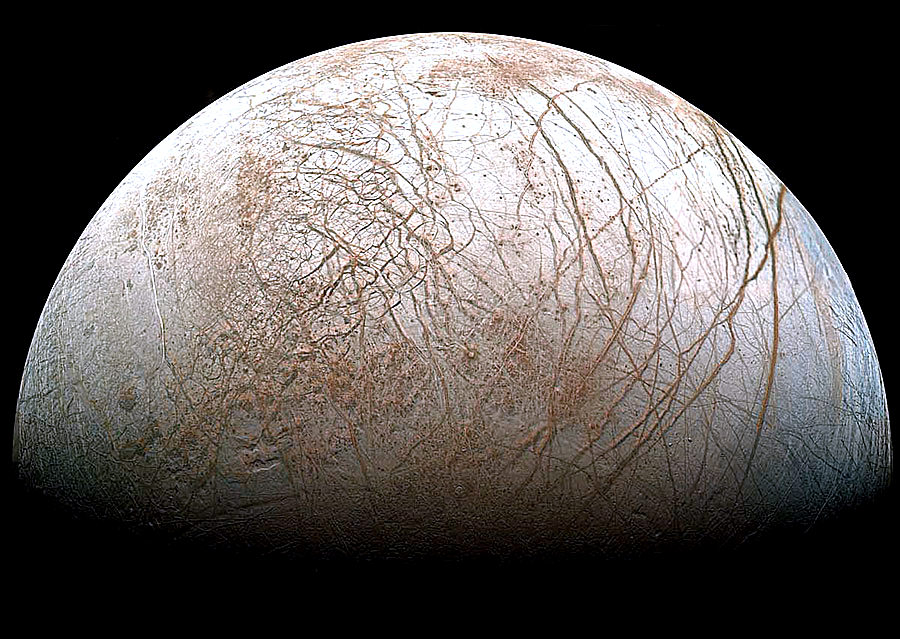Decifering Extraterrestrial Physics
Jupiter's moon Europa is a "water world" encased in ice. The crust covers a moon-sized ocean containing more water than all of the seas on Earth. The moon is considered of 'high interest' for potentially finding life beyond Earth in Europa's ocean. Numerous cracks appear across its icy surface caused by Jupiter's constant gravitational tugging on the moon as it circles the giant planet. How these cracks were formed has been a question ever since the first images of Europa were received from the Galileo mission in 1995 when the spacecraft went into Jupiter.

Cracks in Europa's Ice Crust (credit: Galileo Mission/JPL)
In a fine example of deductive reasoning, the mystery of Europa's cracks and the cyclic appearance may have been solved by NASA physicists. They outlined their analysis in an animation of the process.
Europa has many unusual features including the potential of water geysers. They may have been observed erupting from ice cracks in moon's southern polar region. Current telescopes don't have enough resolution to determine if they actually exist but the evidence is strong. The James Webb Space Telescope (JWST) currently being constructed will launch in 2021. It has the capability to view the moon in great detail and answer the question for certain. An Europa orbiter and lander mission is being planned at the Jet Propulsion Laboratory in California.
Many cool discoveries await the space telescope going into operation.
WHB